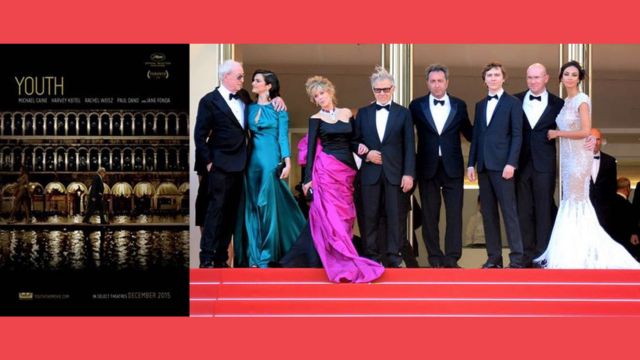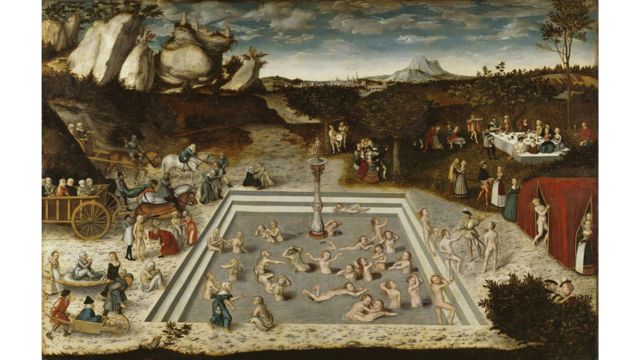Humans have long searched for the Fountain of Youth. Dr. Hong teaches us that it is inside us: it is our conscience.
by Massimo Introvigne*
*Introduction to the webinar “Who Stole Their Youth? Protests, Freedom, and the Tai Ji Men Case,” co-organized by CESNUR and Human Rights Without Frontiers on August 8, 2023, in preparation of the United Nations International Youth Day, August 12.

Reflecting on the International Youth Day I was led to consider that “Youth” is the title (in English even in the Italian version) of a deep and sad movie directed in 2015 by acclaimed Italian director Paolo Sorrentino. It is not a movie about youth but about old people who refuse to become old. Set in a Swiss hotel for rich old people, a place of sadness almost by definition, the film tells the story of a movie director who refuses to accept that by growing old he has lost his magical touch and dreams of producing a last masterpiece, and of a composer and conductor who does not want to perform any longer since his wife has succumbed to dementia. He even refuses an offer to perform for Queen Elizabeth.
One is led to understand that the movie director is the one who still has some hopes, yet when his movie project collapses he ends up committing suicide, while the composer reconciles with the reality of his wife’s illness and in the end does perform for the British Queen, who of course in 2015 was an icon of old age herself.

In most of his movies, Sorrentino tells the same story, that it is difficult to grow old and we are haunted by memories of years we wasted and opportunities we missed. This leads me to mention an entirely different film and a less intellectual one. Perhaps for this reason, it earned more than one billion at box offices internationally, against $23 million of Sorrentino’s “Youth.” This was the 2011 “Pirates of the Caribbean: On Stranger Tides.” I confess I like the series.
This fourth installment was about an often-told story, the search for the Fountain of Youth, a spring supposed to restore the youth to anyone who baths in it or drinks its water. Although historians have found precedents going back to ancient Greek times, the film has it right when it tells us that the idea that the Fountain of Youth may really exist comes from the 16th-century Spanish explorer and first governor of Puerto Rico, Juan Ponce de León, or at least from his biographers. They claimed that by studying Native American legends the governor located the mythical spring in Florida and tried, unsuccessfully, to find it. In “Pirates of the Caribbean: On Stranger Tides” the Fountain is found but is destroyed while different parties fight for it.

Generations of artists and novelists have been fascinated by the Fountain of Youth, which is a powerful metaphor of the universal dream to avoid old age and death.
The bad news is that there is no Fountain of Youth. The good news is that in a way we can all obtain the benefits promised by that mythical Fountain. Devotees of many religions believe that we will depose our mortal bodies but will not die, and will continue living in one or another form. Even atheists, however, believe that our good works will survive us.
Hippocrates, the founder of medicine, who lived between the 5th and the 4th centuries BCE wrote in the first of his “Aphorisms” “Ὁ βίος βραχύς, ἡ δὲ τέχνη μακρή,” which the Romans translated in Latin as “vita brevis, ars longa,” “the life is short, but the art is long.” Although Roman philosophers read it as a moral criticism of those who waste their life, Hippocrates wanted to underline that the results of the arts (in his case, the art of medicine) will continue to benefit humanity long after those who discovered them had died.
This is also true for the works of the visual arts and for the construction of just political societies. Catholic Pope Benedict XVI once said that the most beautiful work of art is a saintly life.
Last month, some of us gathered in Taipei to celebrate the 80th birthday of the Shifu (Grand Master) of Tai Ji Men, Dr. Hong Tao-Tze. At 80 a man may be called old without offense, yet Dr. Hong impressed everybody with his youth-like vitality, which no doubt also derives from his mastery of Qigong. Perhaps whether Dr. Hong is old or young is not even the right question to ask. He has found his Fountain of Youth anyway, and he has taught us that it is not in some remote jungle. It is inside us and is called conscience.

Dr. Hong has lived a beautiful life, and created monuments of beauty and wisdom that will remain forever. So did his dizi, who “lost” their youth by fighting for justice but in fact found it and in turn created beautiful lives. For a Christian, this is reminiscent of Jesus’s teaching in the 16th chapter of the Gospel of Matthew, that those who just want to save their life will lose it, but those who lose their life for the sake of truth will find it.
Lives lived in conscience and for truth and justice are so beautiful that they will remain forever, and forever young. As English poet John Keats famously wrote in “Endymion” in 1817, “A thing of beauty is a joy for ever. Its loveliness increases; it will never pass into nothingness; but still will keep a bower quiet for us, and a sleep full of sweet dreams, and health, and quiet breathing.”
Source: Bitter Winter

